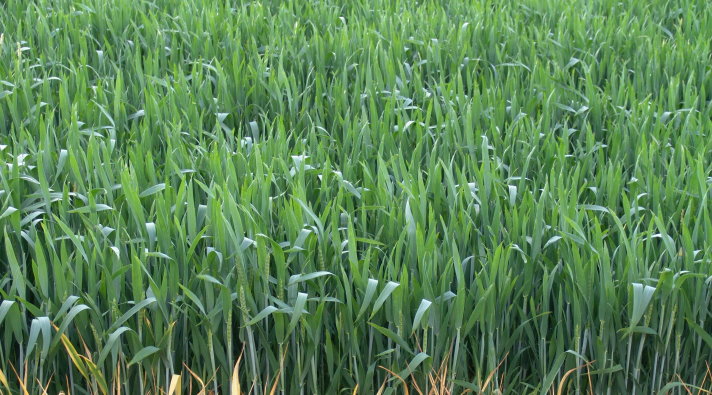
Agricultural News
Watching Wheat Diseases- Dr. Bob Hunger of OSU Provides Update
Wed, 03 Mar 2010 12:07:30 CST
 OSU Plant Pathologist Dr. Bob Hunger provides us the latest disease update for the 2010 winter wheat crop in Oklahoma- and has an update from Texas as well.
OSU Plant Pathologist Dr. Bob Hunger provides us the latest disease update for the 2010 winter wheat crop in Oklahoma- and has an update from Texas as well.
Oklahoma: The rust situation in Oklahoma has not changed over the last week. No stripe rust has been reported or observed in Oklahoma, and levels of leaf rust and powdery mildew are low on susceptible varieties. The forecast is calling for warmer temperatures, which will stimulate wheat growth but will also help the spread of rust and powdery mildew.
Perhaps the most prominent disease at this point in time in Oklahoma is the wheat soilborne mosaic virus (WSBMV)/wheat spindle streak mosaic virus (WSSMV) complex. WSBMV and WSSMV are caused by two different viruses that are transmitted by a soilborne fungus (actually a plasmodiophorid protest) called Polymyxa graminis. Seedlings typically are infected by the fungus in the fall during wet and cool weather, which brings the virus into seedlings. During the fall, winter and early spring the virus replicates and spreads through the plant with symptoms becoming apparent in late February and March.
WSBMV is the more prevalent of these two virus diseases in Oklahoma. Symptoms of WSBMV include stunted and yellow-looking (chlorotic) plants that upon close examination reveal a mosaic-type pattern in the leaves. Symptoms of WSSMV are much the same except that upon close examination of foliage a pattern of chlorotic "spindles" can be observed. The temperature range that favors expression of WSSMV (36-54 F) is lower than that of WSBMV (50-68 F), so symptoms of WSSMV usually are observed earlier than those of WSBMV.
WSSMV typically does not cause much damage in Oklahoma because our late winter/early spring temperatures quickly become sufficiently warm so that the plants "grow away" from the virus. By comparison, WSBMV has a higher temperature optimum, so its affects on susceptible varieties is more noticeable. As temperatures rise above 70 F, varieties susceptible to WSBMV also "grow away" from the virus, but by then, damage has been done to a level such that yield has been significantly lessened.
There are many varieties resistant to WSBMV and WSSMV, so significant losses can be avoided by planting a variety with resistance. This year attention has come to the variety Endurance, which has excellent resistance to WSBMV (the most damaging of the two diseases in Oklahoma) but is susceptible to WSSMV. Since the release of Endurance, occasional but light infection by WSSMV has been observed but because of the temperature affects described above no severe loss of yield by Endurance from WSSMV has been observed. This year however, the wet/cold late winter and early spring has greatly favored WSSMV, and reports (and samples) of Endurance with WSSMV have been confirmed in the Plant Disease and Insect Diagnostic Lab. Warmer temperatures in the coming weeks should help alleviate the affect of WSSMV on Endurance, but only time will reveal if and how much damage occurred.
Click here for more info on Wheat Soil Borne Mosaic from OSU.
*********************************************
Texas: On 02-Mar-2010, I received the following update from Rex Herrington (Research Associate, Dept. of Soil & Crop Sciences, Texas AgriLife Research, College Station, TX 77843-2474). This confirms what he indicated last week in south Texas, that is that both stripe and leaf rust are present. He also indicated that some of the lines were starting to joint.
"On Sunday February 28th, I took some quick stripe and leaf rust notes in our nursery here. Rust is not heavy yet, except on a few highly susceptible lines. Of the 36 lines in the Uniform HRW Variety Test, stripe rust was present on 26 lines, and leaf rust was present on 19 lines. We are continuing to receive frequent rains, with 1/2" last night, and more forecast Fri-Sun. So, with warming temperatures, conditions are ideal for future rust development."
WebReadyTM Powered by WireReady® NSI
Top Agricultural News
More Headlines...




















